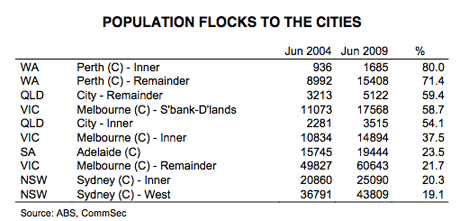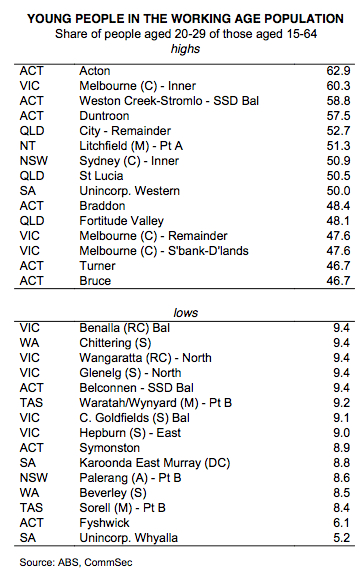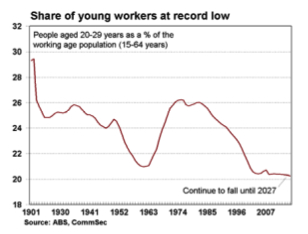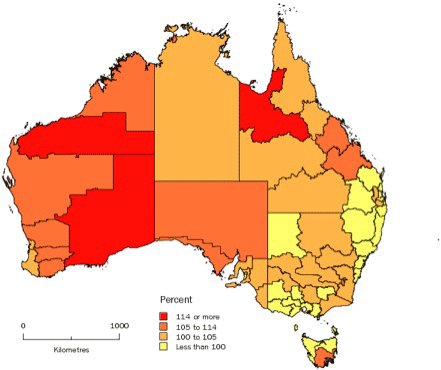And entrepreneurs looking to tap into new customer bases should note that it is Gen Y leading the charge back to town.
The figures, released yesterday, show that the areas that experienced the biggest population growth are all inner city locations.
Perth is the clear winner, with the population in the inner Perth area leaping 80% and in the wider Perth city area by 71%.
The population of inner city Brisbane jumped by over 50%, while the Southbank/Docklands precinct of Melbourne increased by almost 59%.
The population of Sydney city expanded by almost 24,000 people over the past five years, which CommSec economist Craig James says is almost equivalent to the entire town of Armidale.

"Any business or government planning agency worth their salt are regularly tracking the latest data on population flows. Clearly if there are changes in the number or types of people moving into an area, there will be risks and opportunities for businesses in those areas," James says.
"Clearly, retailers and housing-dependent retailers want to know future population trends so they can plan with certainty. Unfortunately that data doesn't exist. But the next best thing is to track the changes in population flows and composition over time."
The data also breaks down the population figures by age and gender on a state-by-state basis, which is valuable information for entrepreneurs.
Areas with older populations might create opportunities for aged care and health service providers, while areas with younger populations might require more leisure and retail amenities.
James says the big trend out of the data is the shift of Gen Y to inner city areas. In most capital cities, workers aged between 20 and 29 account for about half of the total population, with the proportion of Gen Y inhabitants as high as 60% in inner Melbourne.
"The anecdotes suggest that young people have an increasing preference for living near their workplace and entertainment venues – namely the heart of capital cities. That is borne out by the latest data," James says.

Of course, the flow of Gen Y towards the city is creating a big problem in regional areas, where the pipeline of long-term workers is diminishing. James says over 750 of the 1,363 regions tracked have lower than average levels of potential entry-level young workers, with rural and regional areas the worse affected. Hardest hit is the Mid North coast of NSW, with only 15% of people in Coffs Harbour aged 20-29.

The gender breakdown is valuable for businesses that target particular genders, such as female only gyms.
For the record, the areas with the highest proportion of males can be found in the mining areas of Western Australia's Pilbara region and north-west Queensland. The areas with the most females can be found in Hobart, Adelaide and the Sunshine Coast.
Finally, if you are looking for a date, the ABS has helpfully provided a map which shows the proportion of men to women in each region of Australia. If you're hunting for a man, head for Western Australia. If you're looking for a lady and don't want too much competition, the Gold Coast or Northern NSW Coast might be the place for you.
Men per 100 women







